Over the years I’ve written a pretty good number of an articles on “training deer tracking dogs”. More specifically a dog that helps me in pursuit of big game, and more often than not, that big game is whitetail deer. So, what is a deer tracking dog? This used to be a pretty common question, although in recent years the understanding is seemingly growing as much as the popularity. My definition of a “deer dog” is one that will shed hunt in the spring and track or aid in game recovery in the fall. Particularly in the fall, the deer tracking dog is worth more than their weight in gold and the frequency that a deer tracking dog is discussed is obviously magnified.
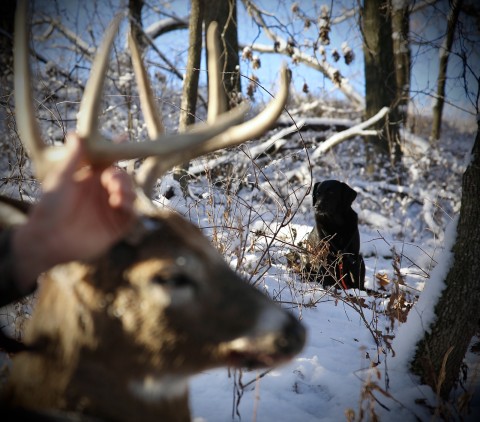
I wanted to point out that when it comes to game recovery, the dogs themselves have the majority of what is needed from a “nuts and bolts” aspect already inside of them. We, as deer tracking dog trainers and handlers, are simply trying to bring that out. I also hoped to make it very clear that training a game recovery dog is something that is not only effective and efficient, but also relatively simple, or dare I even say “easy” to do?
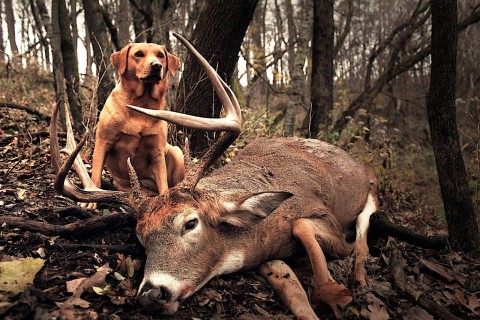
Far too often I hear concerns that training a dog for deer tracking is “too complicated”, “too difficult” or can only be done by a “professional”. My hope is to help convince you that you and your dog have what it takes to at least give it a try. To start out, I thought it might help to eliminate a few excuses I hear all too often like “my dogs not bred for deer tracking”. I believe that inherent traits impact and influence a dog’s ability to be a competent game finder or deer tracking dog. However, the nice part about that is that I really don’t believe the specific breed matters. In fact, as it relates to the actual ability for a dog to find or locate game that may otherwise be lost, I not only disregard the breed, but I believe that most dogs are capable of doing it. This includes a “rescue” dog from the shelter that you may or may not know exactly what their genetic lineage even consists of. The reason I say this is simply because of a dogs actual ability to use their nose effectively is just so great, despite pedigrees or titles. In researching a dog’s ability to smell, there are so many things that I’ve found interesting but a few things really stood out:
• All dogs possess up to 300 million olfactory receptors in their noses. (Humans have about 6 million)• The part of a dog’s brain that is designated to analyze smell is, relatively speaking, 40 times greater than ours.• A dog’s sense of smell overpowers our own by orders of magnitude—it’s 10,000 to 100,000 times as acute. The ability for a dog to use their nose in relation to vision would look like this: what you and I can see at a 1/3 of a mile, your dog could see as well at more than 3,000 miles away.
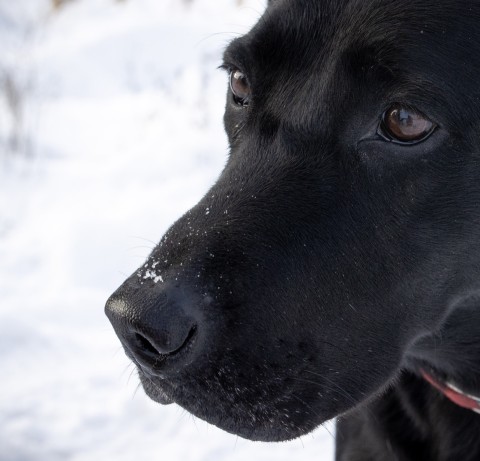
I’m by no means discounting a nice pedigree. I believe 100% in quality breeding is worth every penny and I will always put a great value on what I believe pedigrees’ offer in regards to health, trainability, disposition, confirmation, etc. However, I really don’t think that the pedigree itself limits any and all dogs abilities to smell.
So ask yourself:• Do you have a dog?• Does your dog seem to use its nose around the house or yard?• Does your dog show you signs of intelligence and a willingness to please you?• Do you have an interest using your dog to help in tracking wounded deer?
If you have answered “yes” to any of these questions, I would say you have what it takes to do it. Now it’s putting it all together and executing the plan, keep reading!
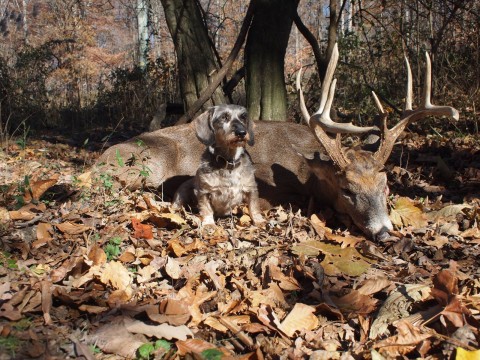
Step 1. Keep it simple and bring out their natural predator-prey instinctsIf you’re reading this and deer season is open, put out a message that you are looking for a fresh deer liver. If you can’t get a hold of one, a beef liver will do. Have a helper hold onto your dog. Simply drag the liver quickly away from the dog and after you get a good head start have your partner let the dog go. Almost instinctively, your dog will take off on the line for you. When they finally get caught up to you and the liver, let them lick on it some and give them a ton of praise. Repeat this a few more times (3-4) with each repetition allowing a little more distance. Follow this session later on that week with one similar, except at one point with one of the repetitions, don’t let the dog watch. Cover their eyes of keep them in the house or kennel until you’ve made the drag.
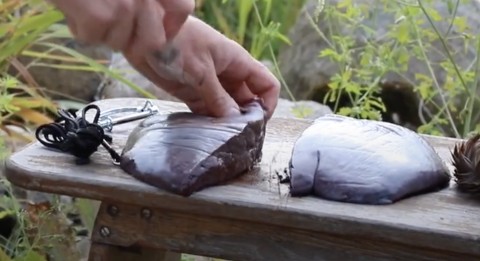
Step 2. Add in additional scent elementsThe liver has a very distinct, strong, appealing scent. That will peak interest early on and help ensure success, but it will not allow introductions to other scent clues that may be found while on the track. In this next step, I like to switch to using real deer hides and a scent that I make myself called “Blood Trail”. Don’t be confused, our Blood Trail scent is not simply just blood. Think about it, if there’s strong visible blood on a track, I don’t need the dog. Instead, it’s when there is none or very little that I need the dog. Repeat step one using the Real Hide and Blood Trail scent and continue to lay the trail without your dog watching you. At this point, be sure to leave your dog something to find at the end. My personal choice is a deer-hide wrapped firehose bumper.
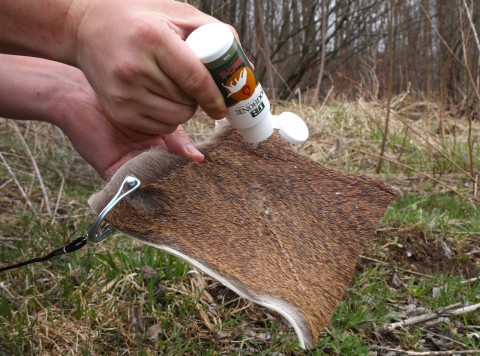
Step 3. Wounded deer don’t always run straightWe have to start to teach our dogs to work turns, angles, backtracks, etc. Once our dogs is taking tracks confidently in straight lines, it is time to keep them honest and remind them to not outrun their nose. By incorporating simple turns to start, then more turns and different scenarios of the line, our dogs will have to force themselves to slow down in order to continue to successfully follow the line. You will be amazed at how naturally your dogs do this if you just set them up correctly and give them the chance.
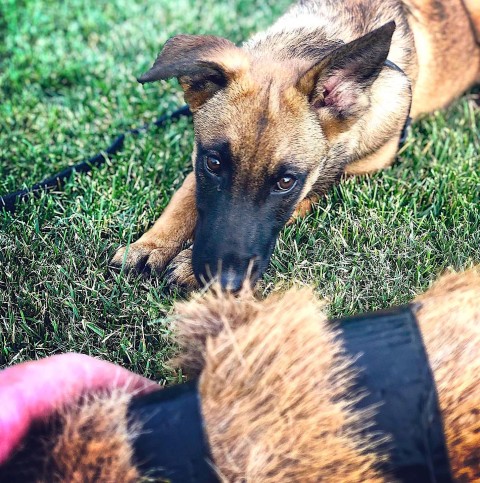
Step 4. Don’t pass on a real training opportunityThe next time you harvest a deer (as long as you know the animal will be recovered) be sure to bring your student along and allow them to have that experience and success. Don’t be critical or concerned if your deer tracking dog struggles. The most necessary skill of any trainer is PATIENCE. Use this as a great tracking dog training opportunity and help your dog find success with the real thing. You will be amazed what this kind of experience will do for a dog and their handler’s confidence.
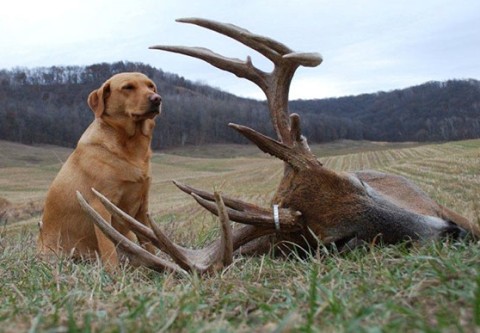
I challenge you to follow these four steps and see what happens. Will that alone make you and your dog a great deer tracking team? No, probably not “great”, but I would argue that it will undoubtedly increase your chances of finding a deer that otherwise may not be recovered. In order to become truly great it will take time and experience. But, if you try those simple steps and have some success I wouldn’t stop there. Instead, I would continue to work on other challenges and scenarios that you’re likely to encounter in the field.
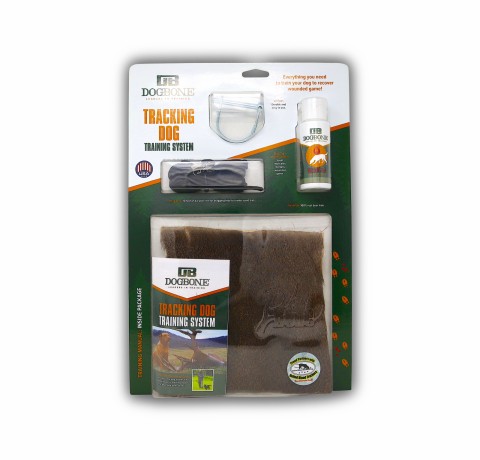
For much more information on training and training products available for wounded deer tracking dog training be sure to check out our website! Best of luck in the woods!-Jeremy Moore
Watch a video of a dog’s first deer tracking dog training track: DogBone YouTube
Shop our Deer Tracking Dog Training System: DogBone Store
Read More Blogs: Jeremy’s Journal








